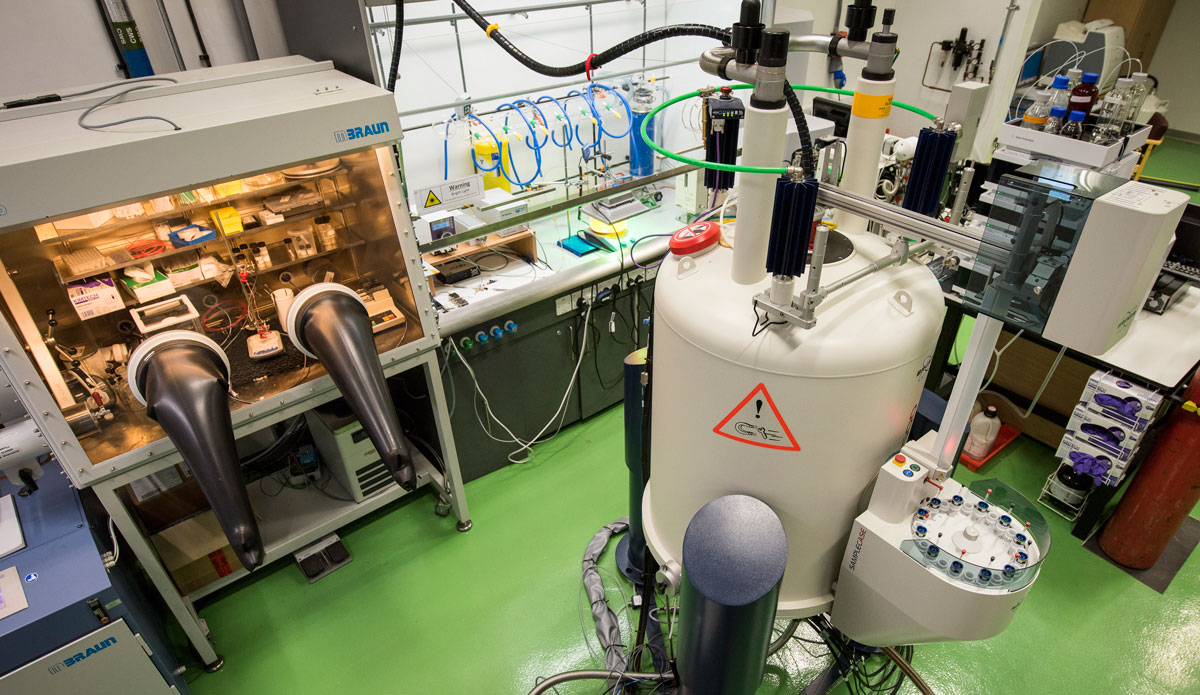
Successful Reaction Monitoring Symposium
On 6 November, the first Reaction Monitoring Symposium brought together members of the chemical community to celebrate the opening of the EPSRC-funded Dynamic Reaction Monitoring (DReaM) Facility at the University of Bath. Held in the Edge, the symposium attracted over 90 participants from both industrial and academic institutions situated in five countries.
The DReaM Facility allows researchers to monitor homogeneous reactions in real-time, under their normal reaction conditions, with a variety of analytical techniques. As well as kinetic data, the DReaM Facility can also help researchers shed light on reaction intermediates and by-products, allowing a comprehensive picture of all aspects of the reaction in solution to be constructed.
Invited speakers Professor Guy Lloyd-Jones (University of Edinburgh), Professor Andrew Weller (University of Oxford), Professor John Blacker (University of Leeds) and Dr Ulrich Hintermair (CSCT, University of Bath) gave captivating talks on their experiences. One of the interesting aspects (and conversely, challenges) of reaction monitoring is the wide range of chemical disciplines it spans, so hearing perspectives from people who work in the branches of organic chemistry, inorganic chemistry and process chemistry was particularly enlightening for the delegates.
Attendees were then given the opportunity to see the DReaM set-up first hand and consider whether their own research could benefit from similar analytical techniques. The day concluded with a round table discussion, facilitated by industrial partners of the DReaM facility – Dr Anna Codina (Bruker), Dr Steven Coombes (AstraZeneca), Dr Clemens Minnich (S-PACT GmbH) and Dr Antonio Zanotti-Gerosa (Johnson Matthey). The key topic, “What challenges and opportunities will reaction monitoring face in the future?”, generated lively debate and a lot of audience participation.
CSCT Whorrod Research Fellow Dr Ulrich Hintermair is the scientific lead on this project, He said: “We are obviously very proud of this new Facility that we have set up here at Bath over the past year, and it was fantastic to see that so many colleagues from a variety of disciplines and sectors share our enthusiasm for real-time reaction monitoring. We’re now looking forward to push the boundaries of science and engineering even further, and use our unique setup for ground-breaking discoveries in catalysis for sustainable chemistry.”
External Users
Interested in using the DReaM facility? We welcome users from industry and academia to apply for time at the facility. See more details. This call is now open and will close on 31 January 2018 and time will be scheduled in mid-2018.
We would like to thank the RSC Faraday Division and the Catalysis Hub for their generous funding, as well as PhD students Andrew Hall (CSCT), Isabel Thomlinson (CSCT), Rachael Broomfield-Tagg and Dan Berry for guiding tours.







